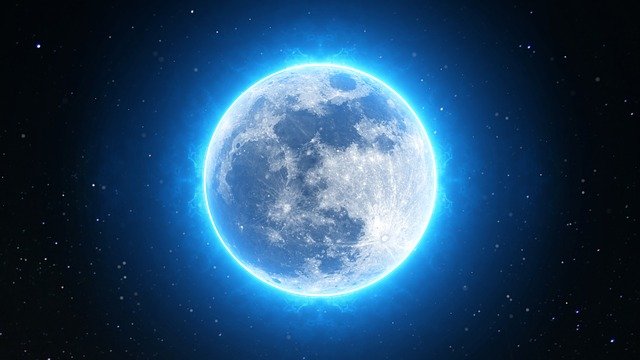The Earth's magnetosphere could encourage the formation of water on the lunar surface
 Before the era of the Apollo expeditions, researchers believed that the moon was an arid desert. All because of the extreme temperatures on its surface and the harsh space environment. However, much has changed since then, and scientists have confirmed the existence of water on the moon (NASA confirms the presence of water in the sunny regions of the moon). It is found in the form of ice in the shady polar craters, it is bound in sediments in the lunar soil and in rocks of volcanic origin. However, there is still uncertainty about the amount and origin of the water on the moon.
Before the era of the Apollo expeditions, researchers believed that the moon was an arid desert. All because of the extreme temperatures on its surface and the harsh space environment. However, much has changed since then, and scientists have confirmed the existence of water on the moon (NASA confirms the presence of water in the sunny regions of the moon). It is found in the form of ice in the shady polar craters, it is bound in sediments in the lunar soil and in rocks of volcanic origin. However, there is still uncertainty about the amount and origin of the water on the moon.
Image source: Pixabay
Where does the water on the moon come from?
The most popular current theory is that positively charged Hydrogen ions, powered by the Solar windthat bombard the lunar surface and spontaneously react with oxygenated minerals in the regolith to form hydroxyl (OH-) groups. Subsequently, the radiation from the micrometeorite bombardment can die Hydroxyl groups in water Convert (H2O). However, a new international study suggests that the solar wind may not be the only source of ions reaching the surface of our natural satellite. Scientists show that particles from the earth can also "sow" water on the moon. If you look at it a little broader, planets could be a source of water for their satellites. Water is much more abundant in space than astronomers first thought. It was found on the surface of Mars, on the moons of Jupiter, in the rings of Saturn, on comets, asteroids and on Pluto. It has also been detected in clouds far outside our solar system. Previously, researchers assumed that water penetrated these objects during the formation of the solar system. Now we are gaining more and more evidence that the water in space is much more dynamic.
The influence of the Earth's magnetosphere
The Solar wind remains the likely source of water on the lunar surface. But computer models developed by scientists suggest that up to half of the water from this source should evaporate during a full moon when the silver ball is under the influence of the Magnetosphere the earth stands. Surprisingly, a recent analysis of Hydroxyl cards the Moon's surface created by the Moon Mineralogy Mapper on the Chandrayaan-1 satellite that the water on the Moon's surface does not disappear during the time it is exposed to the Earth's magnetosphere. Previously, scientists believed that the Earth's magnetic field prevented the solar wind from reaching the moon, causing the water to evaporate faster than it was created. However, it turns out that it is not.
By comparing Hydroxyl cards the lunar surface before, during and after passing through the magnetosphere, the researchers found that the moon water passed through Ion currents can be replenished from the magnetosphere, also known as "earth wind". The presence of these earth-derived ions near the moon was confirmed by the Kaguya satellite, and the THEMIS-ARTEMIS satellites in turn determined their properties.
Previous observations by the Kaguya satellite during the full moon revealed high concentrations of oxygen isotopes that have escaped the Earth's ozone layer and settled in the lunar floor, along with an abundance of hydrogen ions. These combined particle flows differ fundamentally from those in the solar wind. The discovery suggests that the Earth's magnetosphere itself is a "Water bridge"that could replenish the water on the moon.
Future research
A team of experts in cosmochemistry, space physics, and planetary geology were involved in the study. As it turned out, previous interpretations by scientists did not take into account the influence of ions from the earth and did not study how the water on the moon's surface changes over time. Analysis was particularly difficult because of the rarity of similar observations and the need to compare the same conditions on the lunar surface. Scientists believe that future studies of solar and planetary winds could reveal more about the origin of water in our solar system. However, satellites with comprehensive Water mapping spectrometers and Particle sensors in orbit and on the lunar surface.